5 Simple Swing Checks That Will Drastically Improve Your Ball-Striking
Golf Monthly Top 50 Coach and PGA professional Alistair Davies shares 5 simple swing checks that every amateur should use...
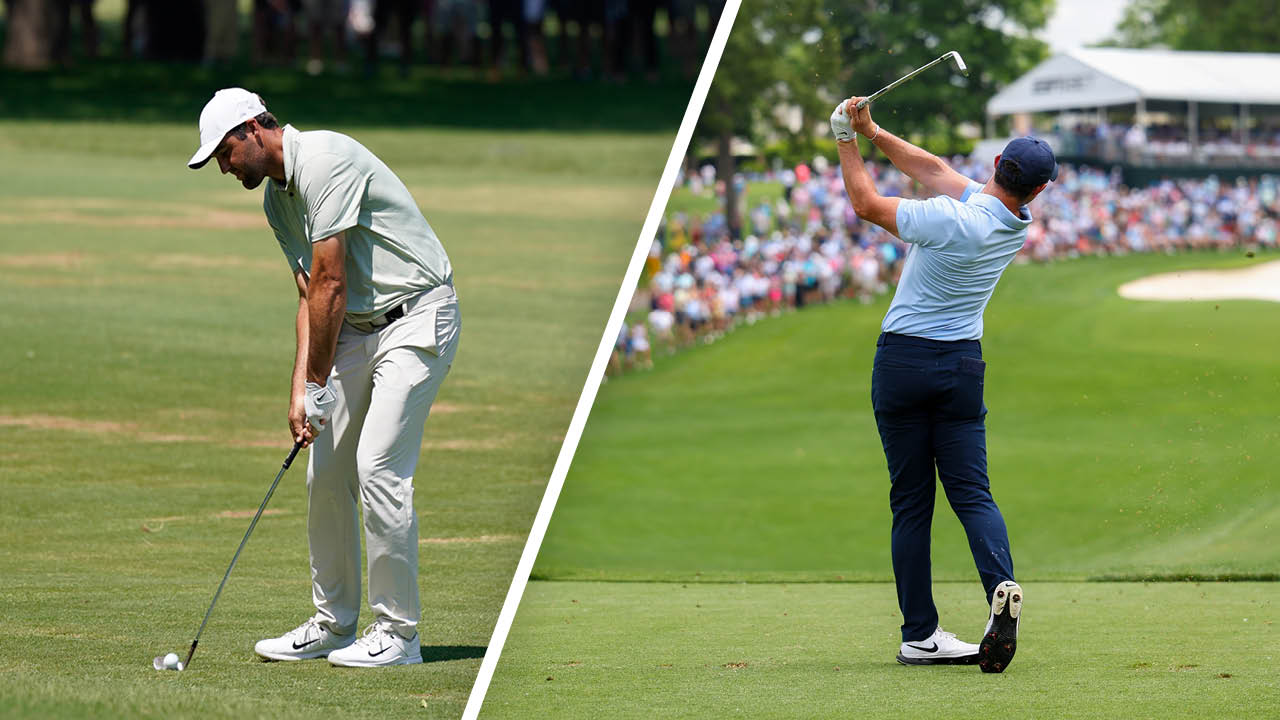

Jeremy Ellwood
Regardless of your handicap and experience, checking your golf swing is something that all players should do regularly. Ensuring that the key fundamentals remain a priority, like having the perfect golf grip or the correct ball position every time, will help to maintain your consistency and give you the best chance of shooting lower scores.
In this article, Golf Monthly Top 50 Coach Alistair Davies shares five simple swing checks, as well as his expert tips, so that you can carry out your own golf swing MOT...
1. Rotate And Relocate: The Tailbone Drill
This is all about the rotation and extension of your body through impact and into the finish. Place an alignment stick through your belt pointing down to the ground. Your goal is to make sure you rotate and relocate by getting the stick past the ball’s address position in your finish.
This drill highlights how well the centre of your navel – your tailbone – is moving through impact and how well you are transferring your weight from trail side to lead side. If you move on to your back foot through the ball, the alignment stick won’t get past the ball’s address position – a tell-tale sign that you’re hanging back, maybe in an attempt to help the ball up.
2. Alignment: Empty Ear Process
Measuring how much you have to rotate your head to see the target is an easy way to self-check your alignment. Rotating your head as though you’re wanting to tip something out of your right ear gives you a better perception of where you’re actually aiming than simply looking over your shoulder.
Using this ‘empty ear process’ and rotating your head to check your alignment can highlight if your aim is out, as the amount of rotation needed will indicate whether you’re aiming too far right or left. If very little head movement is needed, you’re aiming too far left; if excessive head movement is required, you’re aiming too far right.
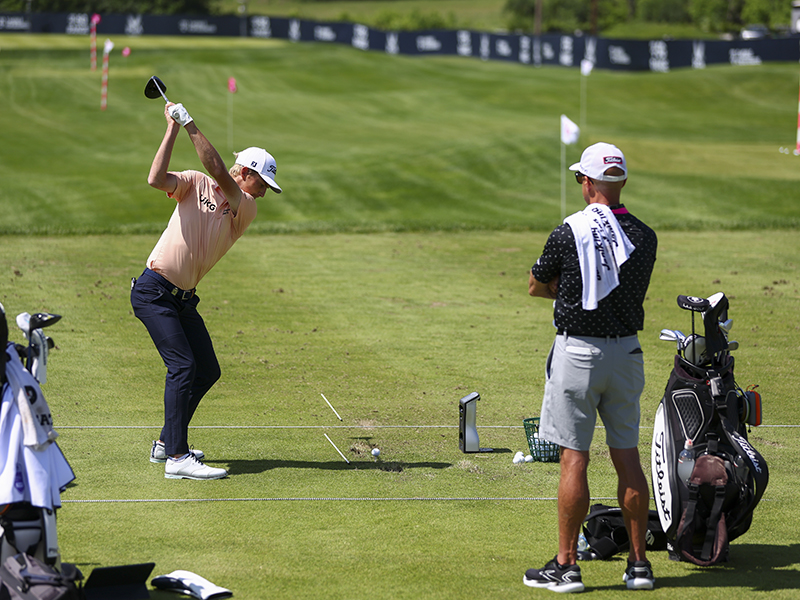
Will Zalatoris using an alignment stick on the driving range in preparation for a tournament
3. Correct Takeaway: Torch Beam Drill
In this takeaway drill, visualise a torch beam coming out of the butt end of your club. The beam should stay pointing at your belly button as you start the swing, rather than pointing to the target too soon via excessive early use of the wrists.
Get the Golf Monthly Newsletter
Subscribe to the Golf Monthly newsletter to stay up to date with all the latest tour news, equipment news, reviews, head-to-heads and buyer’s guides from our team of experienced experts.
If the beam does point to the target too soon, you’ll be taking the club away on the inside too early. It will then either stay inside as you take it back, or your arms will pick the club up, causing your swing to become disconnected.
You’ll then have to make compensations elsewhere to hit the ball well, and while some players may be able to do this consistently, most can’t. Focus on this imaginary beam remaining pointed at your navel until the club is just past parallel on the way back.
4. Right Arm At Address: 'Give Blood' Position
When you give blood, the fold of your elbow points up. Think like this at set-up to help get your right arm sitting beneath your left arm better at address, which in turn allows you to fold the right arm correctly as you take the club back and get it on the correct plane.
If your right arm isn’t in the ‘give blood’ position, the tendency is to either pick the club up with your arms so things gets disconnected, or to use a lot of independent wrist action with the club getting too wrapped around you on the inside. So, think ‘give blood’ to help set things correctly at address and allow the trail arm to fold in the right way on the takeaway and backswing.

Rory McIlroy in a great position at the top of the backswing
5. Hip Levels: Tilt To Turn Correctly
Many golfers set their right hip too high at address. When you start from this position, it’s hard to rotate your spine on the backswing – you’ll probably end up under-turning and swaying.
Set your left hip slightly higher than the right at address to allow your spine to sit correctly, so you can rotate and transfer your weight well in the backswing. This will then naturally lead into other good habits as your swing continues. It’s all about loading correctly. Use an alignment stick to check that your left hip sits slightly higher than your right at address.
Want To Read More Expert Golf Tips?
The Golf Monthly archive is a gold mine of brilliant reads, documenting a journey through the history of golf dating back to our first issue in 1911. Take advantage of over 100 years of invaluable tips from the best tour professionals and coaches in world golf, by subscribing to the online Golf Monthly Archive.

Location: Forest of Arden Marriott Hotel & Country Club
Alistair is Director Of Coaching Hit Golf Academy, based at the Forest of Arden in Birmingham. He has coached numerous county squads, including Staffordshire, Warwickshire and Derby.
Roles:
Former Academy Coach Wales South West Squad
Performance Director Midland Performance Golf Academy
Birmingham University Head Coach
Solihull College AASE England Programme Coach
Greatest teaching success story:
Ben Russell's best round was 126 when he first came to me. Within a year he shot 65 gross; within three he'd achieved a playing handicap of plus 2; and within five years he was playing full time on the mini tours. Now Ben is a fully qualified PGA professional. I was absolutely delighted to play a part in his development and journey.
Typical lesson:
It all starts with the player - their goals. This is followed by an assessment or evidence gathering exercise. I watch them hit balls, assess ball flight, movement, gather video and collect TrackMan data. Firstly, we discuss the good bits and the opportunities for growth. Then, I challenge them to make changes, if appropriate, and I try to match their learning style to support their journey to better.
- Jeremy EllwoodContributing Editor
-
 Justin Thomas Confirms Stand-In Caddie Will Not Replace Long-Term Looper After First Victory Since 2022
Justin Thomas Confirms Stand-In Caddie Will Not Replace Long-Term Looper After First Victory Since 2022Thomas won the RBC Heritage with Max Homa's former looper, Joe Greiner as his assistant but is looking forward to welcoming his regular caddie back soon
By Jonny Leighfield
-
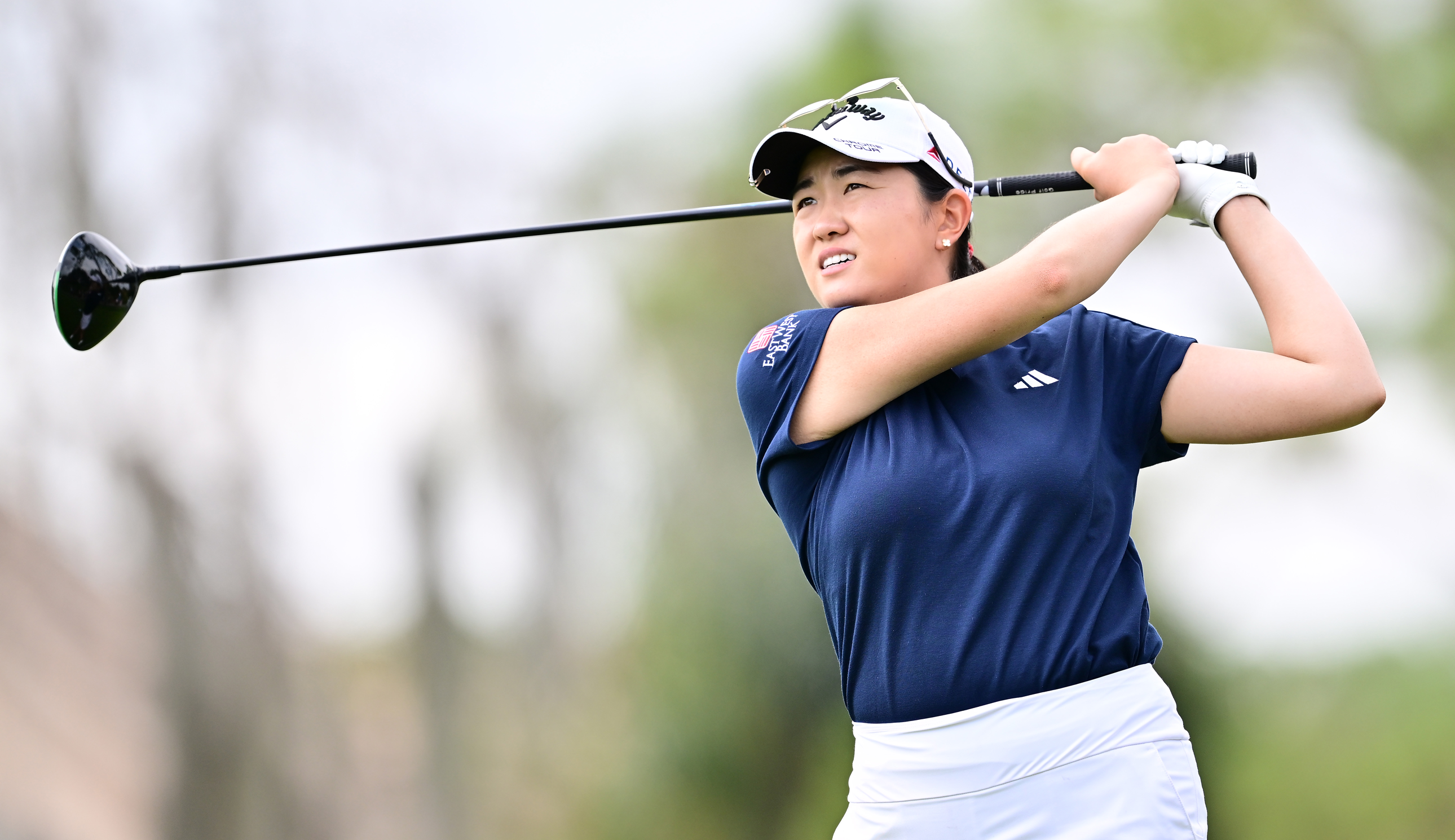 Rose Zhang Ruled Out Of Chevron Championship
Rose Zhang Ruled Out Of Chevron ChampionshipThe American hasn't featured in a competitive event since withdrawing from the T-Mobile Match Play, with it reported that Zhang will miss the Chevron Championship due to an ongoing neck injury
By Matt Cradock
-
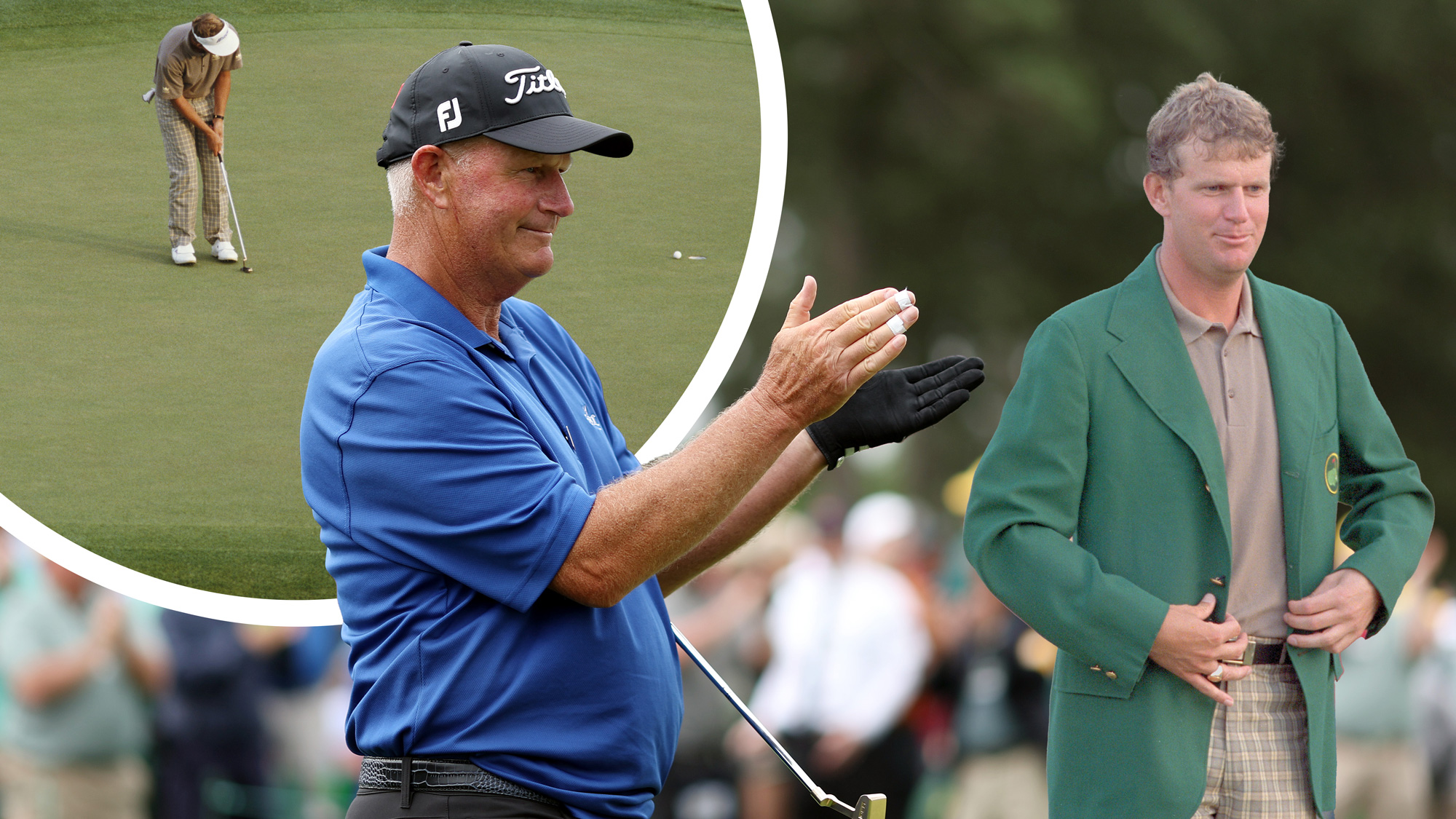 Sandy Lyle Shared 3 Top Tips With Us Prior To Winning The Masters in 1988... And They Could Still Save You Shots 37 Years Later
Sandy Lyle Shared 3 Top Tips With Us Prior To Winning The Masters in 1988... And They Could Still Save You Shots 37 Years LaterThe 1988 Masters Champion shared his expert tips in the January 1988 issue of Golf Monthly, but they are still absolute gems for amateur golfers to this day...
By Barry Plummer
-
 Are You More Accurate Than The Average Amateur Golfer? Peter Finch Can Help You Hit More Fairways In 2025
Are You More Accurate Than The Average Amateur Golfer? Peter Finch Can Help You Hit More Fairways In 2025There is no better feeling than striping one down the middle of the fairway, but many amateurs struggle with accuracy. Peter Finch has four pro tips to help...
By Barry Plummer
-
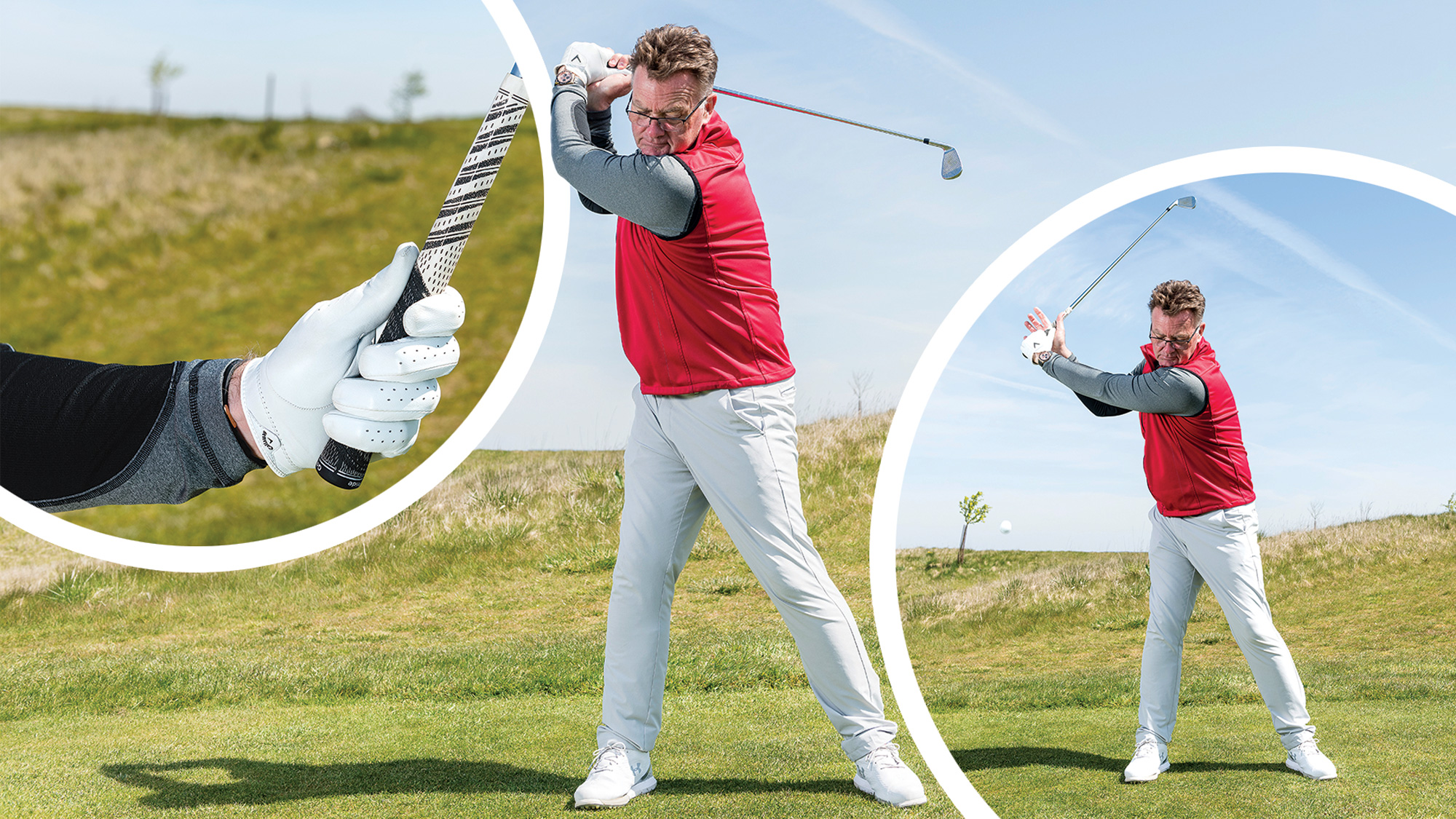 Are You A Victim Of This Destructive Golf Swing Fault? Let Me Help You Fix It Before You Tee It Up This Weekend
Are You A Victim Of This Destructive Golf Swing Fault? Let Me Help You Fix It Before You Tee It Up This WeekendAn overswing in golf is a destructive habit which can cost us precious shots on the golf course, but PGA Pro John Jacobs has a quick fix to get us game ready...
By Barry Plummer
-
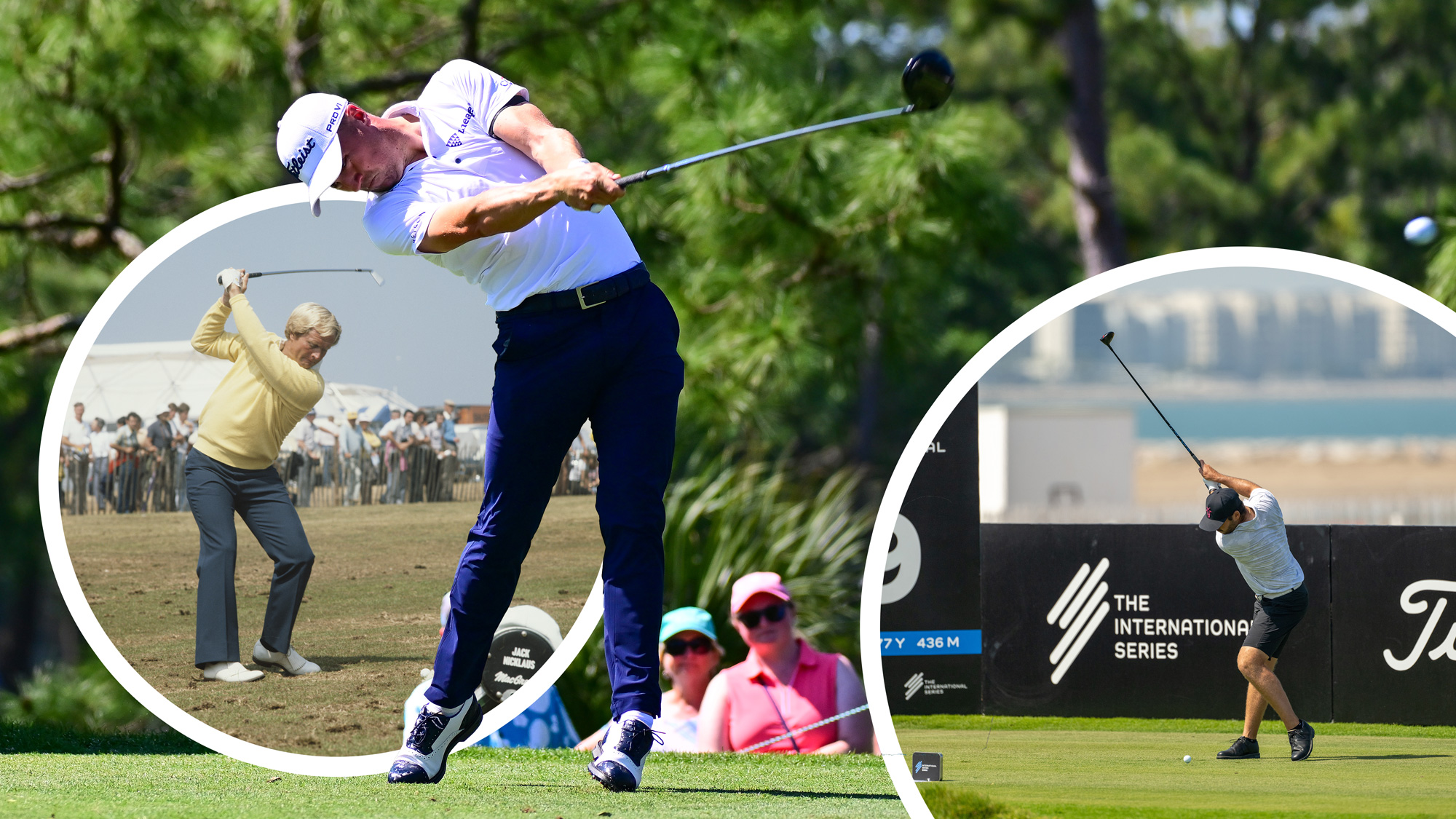 Do You Struggle With Distance Off The Tee? Try This Quick Fix To Make 2025 Your Biggest Golf Season Yet
Do You Struggle With Distance Off The Tee? Try This Quick Fix To Make 2025 Your Biggest Golf Season YetStruggling with distance off the tee could be a major reason why your handicap isn't coming down or your scores aren't improving, but our quick fix can help...
By Barry Plummer
-
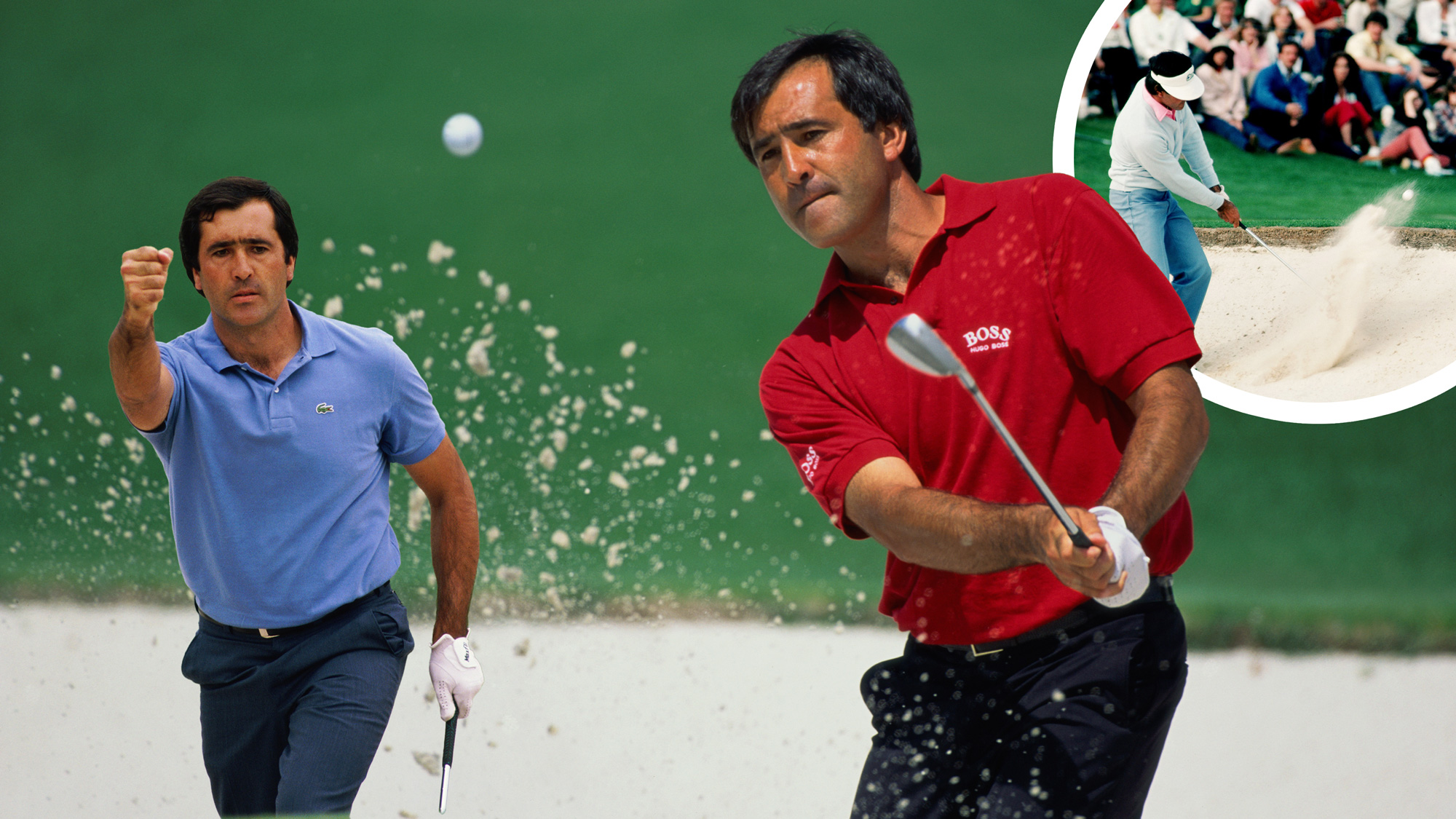 Seve's 'Lost' Bunker Lesson: Master Slopes And Transform Your Short Game Today
Seve's 'Lost' Bunker Lesson: Master Slopes And Transform Your Short Game TodaySeve's forgotten bunker lesson, from Golf Monthly's August 1983 issue, could hold the secret to better bunker play and supercharging your short game this season
By Barry Plummer
-
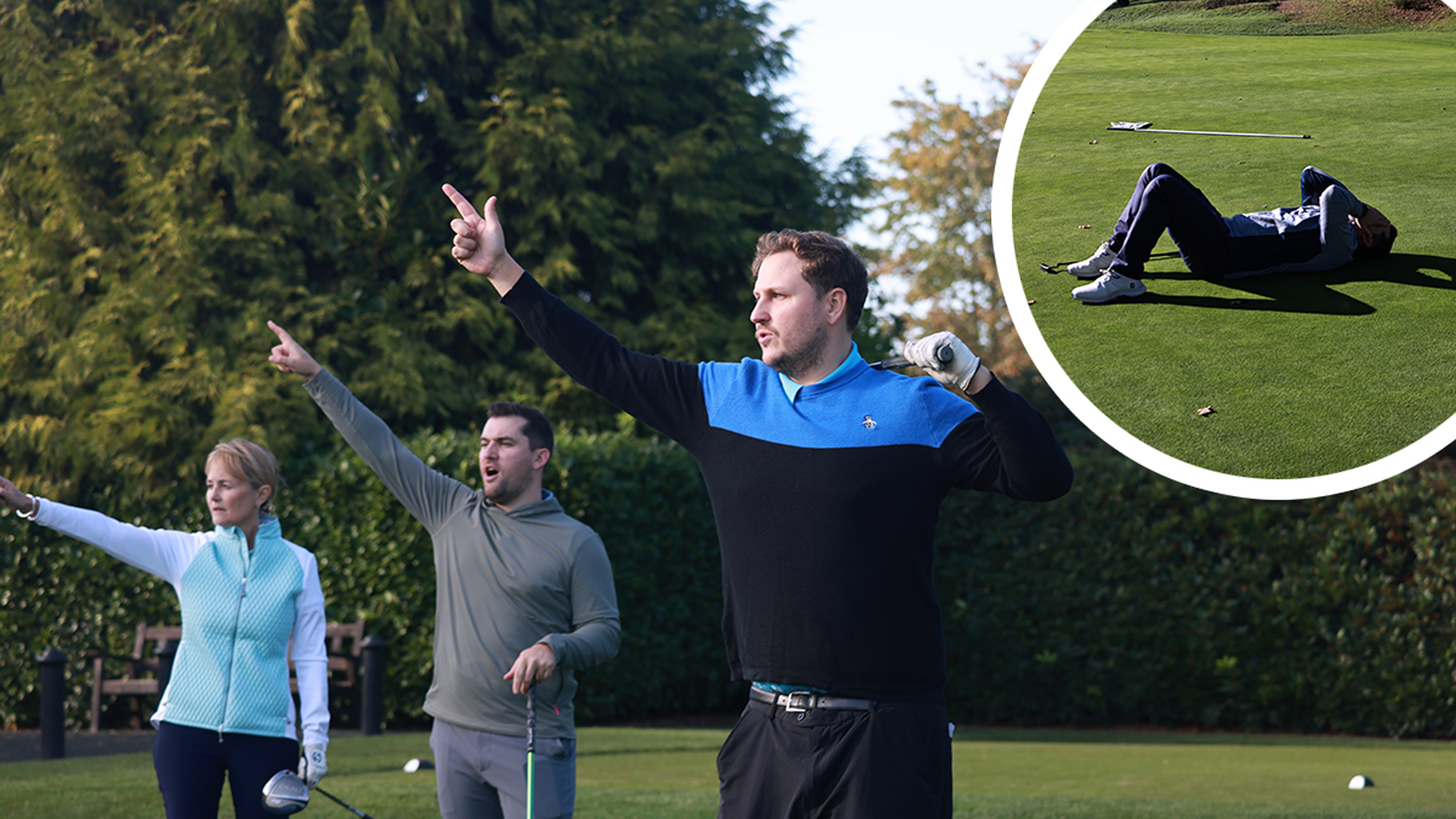 Is Your Golf Swing Failing You? This All-Encompassing Drill Can Instantly Save It
Is Your Golf Swing Failing You? This All-Encompassing Drill Can Instantly Save ItAre you struggling with your golf swing? Discover the all-encompassing drill that can fix common swing faults and restore your game. Get back on track today!
By Tom Motley
-
 I Attended An Exclusive Tee To Green Masterclass With A Top Golf Coach... Now I'm Sharing His 6 Transformative Tips With You
I Attended An Exclusive Tee To Green Masterclass With A Top Golf Coach... Now I'm Sharing His 6 Transformative Tips With YouFew golfers get the chance to spend an entire day with a top golf coach, which is why I can't keep his six expert tips to myself. Get ready to play better golf!
By Barry Plummer
-
 5 Things The Biggest Hitters Do To Generate Power In Their Golf Swing (And How You Can Copy Them)
5 Things The Biggest Hitters Do To Generate Power In Their Golf Swing (And How You Can Copy Them)Generating more power is a great way to improve your handicap and shoot lower scores. So, we analysed the biggest hitters in golf to help you hit it further...
By Barry Plummer